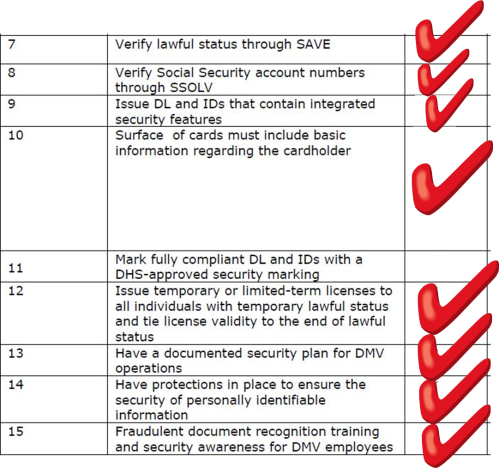 Kaye Beach
Kaye Beach
Jan 15, 2012
Part II
This is Part II of my ongoing dissertation on Fusion Centers and the work they do. You can read Part I, Intelligence Led Policing and Fusion Centers: How the IACP Helped the USA to Cross the Rubicon, which dealt with the flawed and dangerous philosophy of preemptive or Intelligence Led Policing that makes the whole domestic terrorism apparatus, including fusion centers such a threat to the liberties of everyone.
In Part II I am going to explain what the centers really do and who is in control of them and how.
Fusion Centers-State of Federal?
It is all about collecting the data and getting it to the federal government. The most important function of Fusions Centers is also the most invisible portion of their work; the computer networks and information sharing that takes place through those networks.
Despite claims that the Fusion Centers were created by the states, the truth is that the modern day fusion centers were born of policy established at the federal level and they are largely funded, staffed and trained by representatives of federal agencies. The federal government likes to claim that the states are partners with the federal government in this and other programs like it.
Question: If I set the rules and I pay the bills and I own the house that you are currently residing in, are you really my partner?
Answer: only to the degree that I am willing to pretend that you are.
When it comes to state fusion centers, the federal government has been paying the bills, they set the rules and they own the house.
Paying the Bills-Federal Funding
Since 2003 the Department of Homeland Security has given $31 billion dollars to the state and local governments.
3.8 billion was given to the states in 2010 alone. The programs funded by the DHS, largely focus on countering terrorism but also on natural and man-made disasters are required to be tuned to DHS dictates. According to the Government Accountability Office, Fusion centers have been received $426 million in general grant funding from fiscal 2004 through fiscal 2009. Stating the obvious about money and control, “You take the king’s shilling, you become the king’s man”—Tom Cole
This news article published Nov 27, 2011, Oklahoma’s fusion center has a broad role these days, makes who is paying the bills pretty clear.
Oklahoma’s federally funded information fusion center has a broader role today than it did when it began operations four years ago.
. . .Oklahoma’s fusion center is housed inside the Oklahoma State Bureau of Investigation‘s headquarters, 6600 N Harvey Place, and includes a secured room where secret information from the federal government is received.
. . .A central office includes a small room filled with monitors and TV screens, relaying data to an analyst. Its operations are funded, for the most part, by grants from the U.S. Department of Homeland Security.
Stenhouse said the federal agency provided Oklahoma’s fusion center with about $400,000, which he said was used to pay the salaries of four analysts and training purposes. (All emphasis mine) Read more: http://newsok.com/oklahomas-fusion-center-has-a-broad-role-these-days./article/3626735#ixzz1i4z2ZOBQ
Oklahoma has received hundreds of millions of dollars in Homeland Security funds since 911 and the state understands who is in charge even if the officials choose to dance around the truth with the public.
The following is from the Oklahoma Information Fusion Center’s “Privacy Policy.” It is clearly stated that the Oklahoma Office of Homeland Security oversees the initiatives and mandates of the federal Department of Homeland Security-including our state’s fusion center.
OKOHS (Oklahoma Office of Homeland Security) is directed to continue their efforts in combating terrorism, and shall continue to oversee the implementation of any and all initiatives or efforts mandated by the United States Department of Homeland Security, including the development of a state information fusion center. (Emphasis mine)Read more
Federal Personnel Staff state fusion centers-. According to the Government Accountability Office Report, as of July 2010, the DHS has deployed 58 personnel to fusion centers, and the FBI has deployed 74 personnel to fusion centers.
Setting the Rules
In 2008 we learned that the federal government has no qualms about yanking those strings attached hard and that includes subverting state law intended to protect the citizens of that state in the process. The Fusion Centers have a job to do and that job requires some changes to be made to pesky state laws meant to provide residents with openness to, and oversight of, their government.
EPIC Executive Director Marc Rotenberg said, “the FBI memorandum indicates that the federal government is attempting to shroud the Virginia Fusion Center in secrecy and prevent meaningful public oversight. Virginia citizens deserve an open and transparent state government that is not constrained by federal secrecy policies.”
http://epic.org/press/041108.html
Through the litigation, EPIC uncovered a secret contract between the State Police and the FBI that limits the rights of Virginia citizens to learn what information the State Police collect about them.
http://epic.org/privacy/virginia_fusion/
Fusion centers may be physically located in the states but their guts belong to Homeland Security!
If you think of Fusion Centers as a place you will miss what the centers are really about. Fusion Centers are part of a domestic intelligence system and the guts of the fusion centers are the data networks.
The federal government (guided all the way by the International Association of Chiefs of Police) defined the fusion centers and their processed from the start. They drew up the map.
“The National Criminal Intelligence Sharing Plan, developed by Global in partnership with the IACP, is the first of its kind in this country — and promises to bring us closer to achieving the goal, expressed at your 2002 Summit, of “intelligence-led policing.” . . . it serves as a “roadmap” for our national criminal intelligence sharing initiatives.” –THE HONORABLE DEBORAH J. DANIELS
The question of whether or not these institutions are state or federal entities is a moot point. Though they physically reside in the states, the federal government aside from defining, funding and staffing the centers, also controls the data networks and they set the standards for how data is collected and shared.
Federal standards equal federal control
Standards are important if you want to:
- SHARE DATA (speak the same language)
Standards Provide
- On-demand real time data access
Navigating the Standards Landscape
A Nationwide Network
You know what is worse for you privacy ant autonomy that a central database? A distributed network of databases that are constantly updated that the central government can reach into at will.
The DHS intelligence analysis center or the DCI’s counterterrorist center do not need to accumulate and hold all relevant databases to which they may gain access. In other words, there is no need to build one big data warehouse. Instead, the centers should interface with such databases as needed.
—Markle Foundation Task Force Report 2002
Owning the House
In 2008, the Department of Homeland Security, the Department of Justice, and Global jointly published a supplement to the Fusion Center Guidelines called Baseline Capabilities Baseline Capabilities defines the capabilities needed to create a nationwide network of fusion centers and sets forth the minimum standards for a fusion center to be able to perform basic functions.
The Department of Homeland Security set out an objective to create a network of fusions centers as a unique law enforcement and threat information resource that works across jurisdictions and is supported by multidisciplinary teams dispersed throughout a national network of information hives. Source EPIC
“. . .Fusion Centers will be the centerpiece of state, local, federal intelligence-sharing for the future and that the Department of Homeland Security will be working and aiming its programs to underlie Fusion Centers.” –DHS Secretary Janet Napolitano March 13, 2009
http://www.dhs.gov/ynews/speeches/sp_1236975404263.shtm
Jurisdiction
The Fusion Center Guidelines states that, “nontraditional collectors of intelligence, such as public safety entities and private sector organizations” will be “fused’ with law enforcement data” The goal is to break down traditional barriers to information sharing.
These barriers are commonly referred to as “siloes” or “stovepipes”
 Those “silos” or barriers can also be thought of as jurisdictions.
Those “silos” or barriers can also be thought of as jurisdictions.
From the Legal Information Institute;
Jurisdiction-The term jurisdiction is really synonymous with the word “power” Jurisdiction is the territory within which a court or government agency may properly exercise its power
It is not difficult to understand that when the the lines of authority are blended power will default to the higher level.
Agency protectiveness over jurisdiction and it is the authority an entity has over that jurisdiction that is the real barrier. Simply stated, the problem with integrating data systems is not a physical or technical one; it’s political. Until recently, the barrier was both political and technological. Now that the technological barrier has been removed, some think that the political barrier should follow suit. But just because something is possible does it mean we should do it?
“National employment databases, national medical databases, national criminal databases, and others have already been created.
The dream is to blend all these separate resources into a single centralized one…the only real impediments to creating the database that now remain are political and cultural: the stubborn assumption of so many Americans that they have rights.”
The State’s Quest for Total Information Awareness by David M. Brown
In the past, the technological or physical barrier acted as sort of a firewall to siloes of data. Data was shared on a legal right and need to know basis and the entity wanting it had to ask. While technology makes it possible to share lots of information in an instant with anyone in the world, there are still plenty of good reasons to protect sensitive information.
If you really, really want to settle this whole argument about whether or not fusion centers are state of federal, just read about Homeland Security’s Federal Fusion Center initiative.
In 2010 The Department of Homeland Security announced its intention to;
“collect, plan, coordinate, report, analyze, and fuse infrastructure information related to all-threats and all-hazards, law enforcement activities, intelligence activities, man-made disasters and acts of terrorism, natural disasters, and other information collected or received from federal, state, local, tribal, and territorial agencies and organizations; foreign governments and international organizations; domestic security and emergency management officials; and private sector entities or individuals into the Department.”
The DHS is creating a federal fusion center by ‘fusing’ information from the centers. DHS is laying claim to all of that data to use as they see fit.
The Department of Homeland Security has repeatedly stated that Fusion Centers were owned by the states, the creation of this new system of records action totally negates that dubious claim. They didn’t ask anyone’s permission. Why? Because they paid the bills, they set the rules and they own the house. The states are a “partner” up until the federal government decided they weren’t.
Fusion Centers, for all practical intents and purposes, belongs to none other than Big Momma Gov. and if anyone tells you different, grab a pitcher because their pants are on fire!























